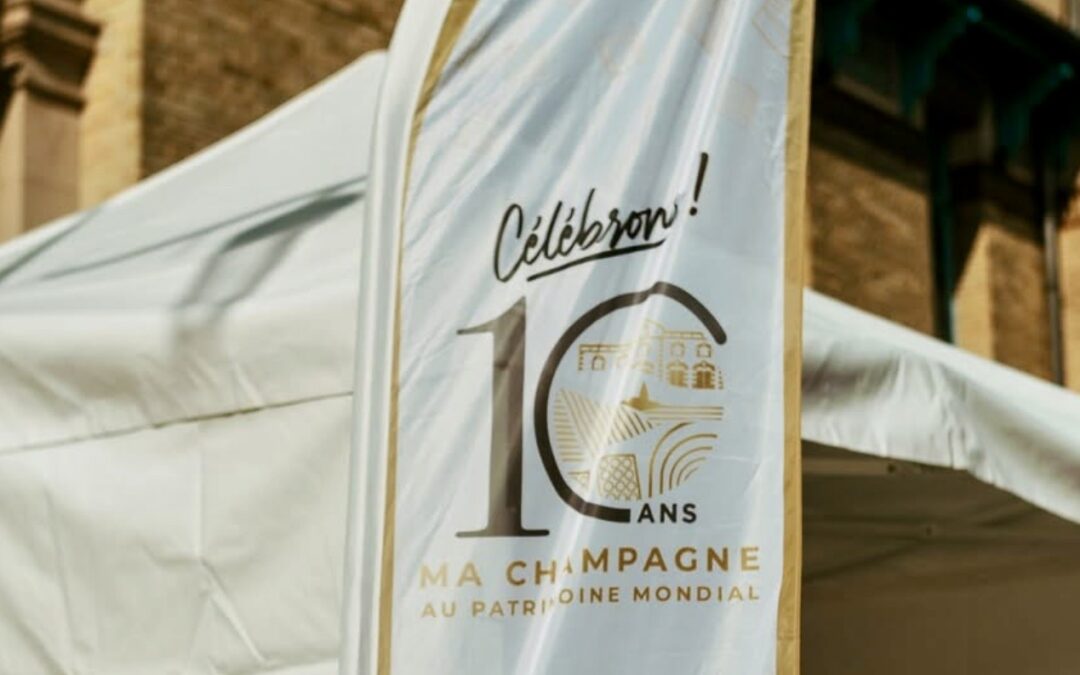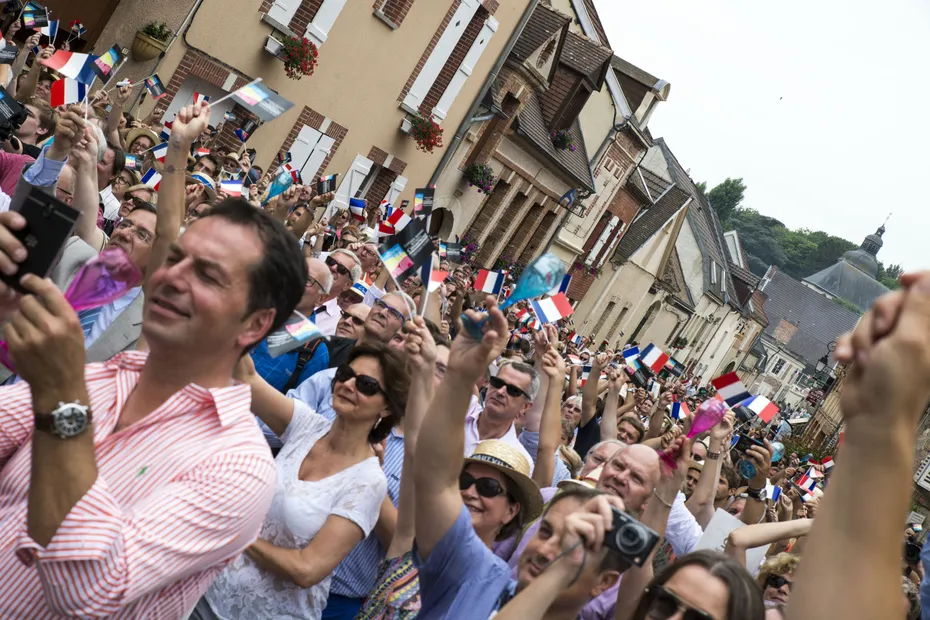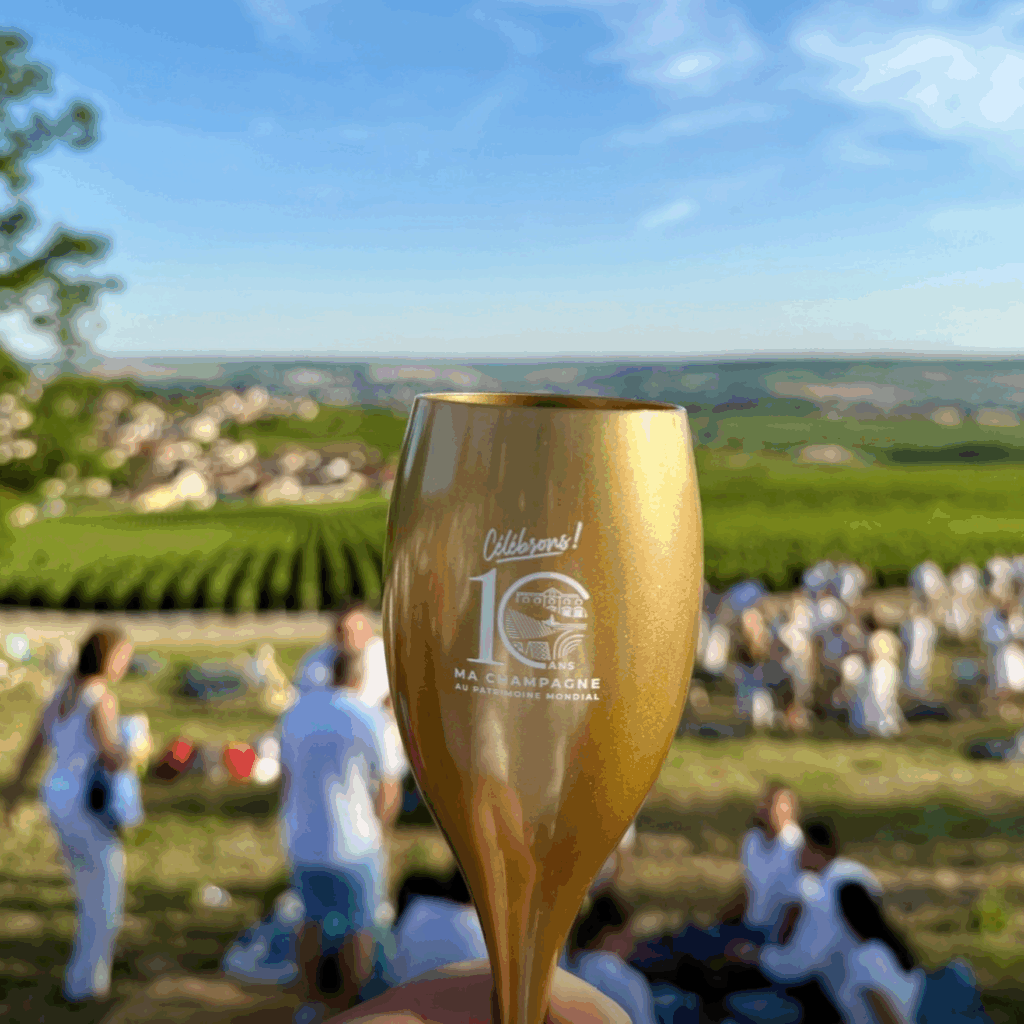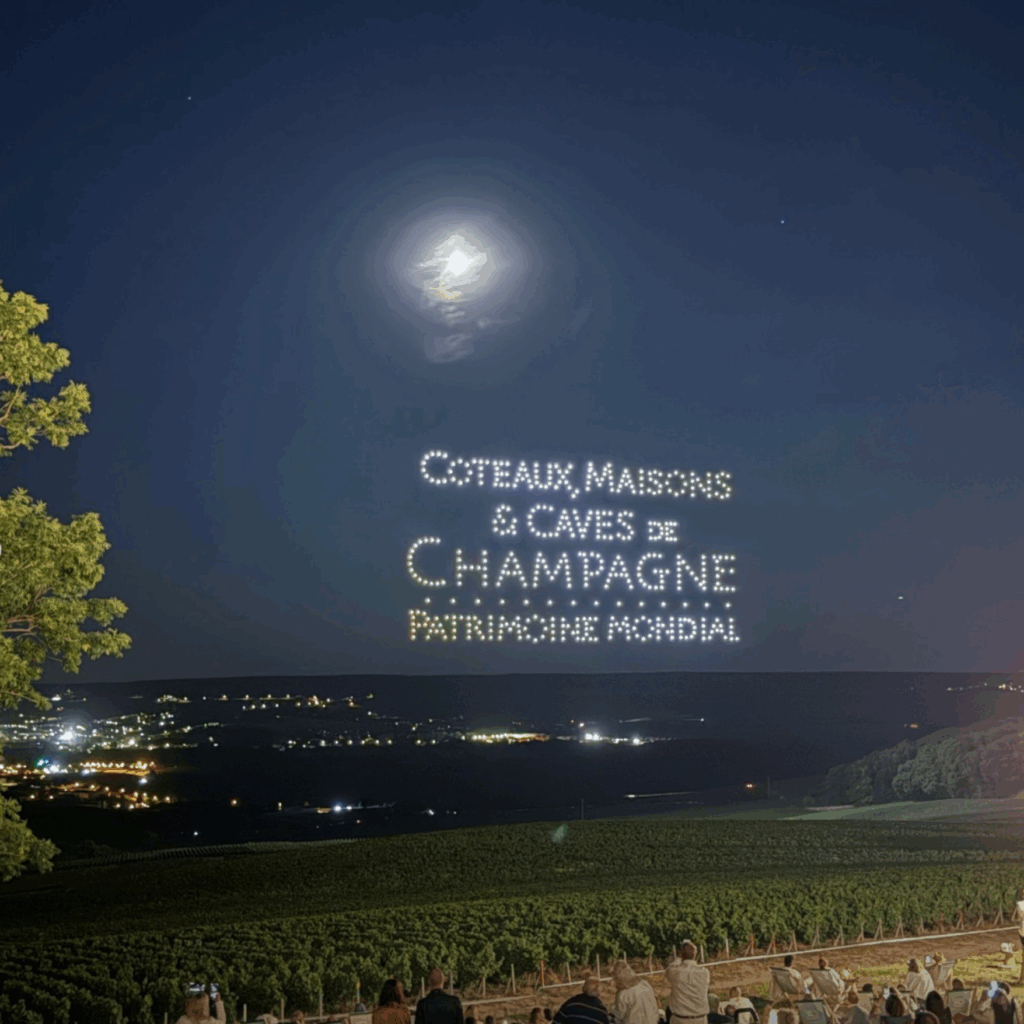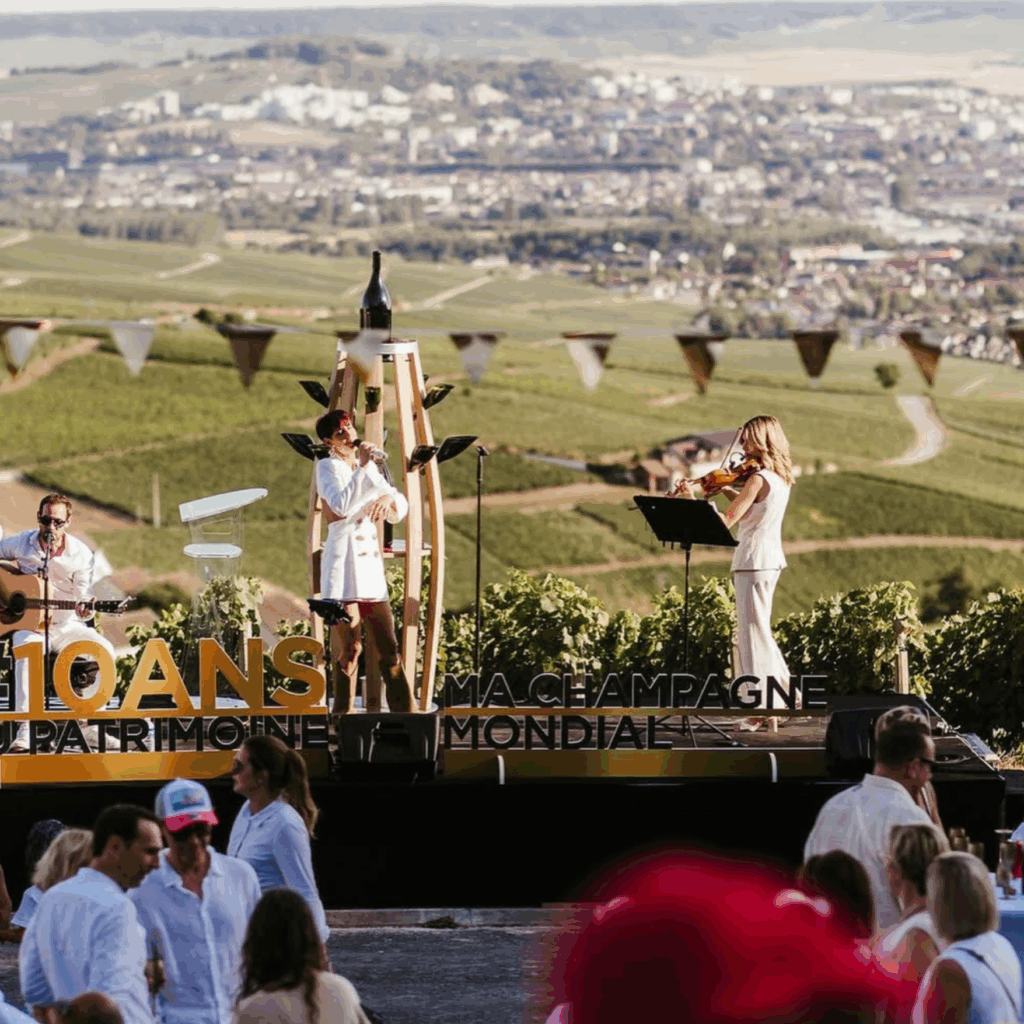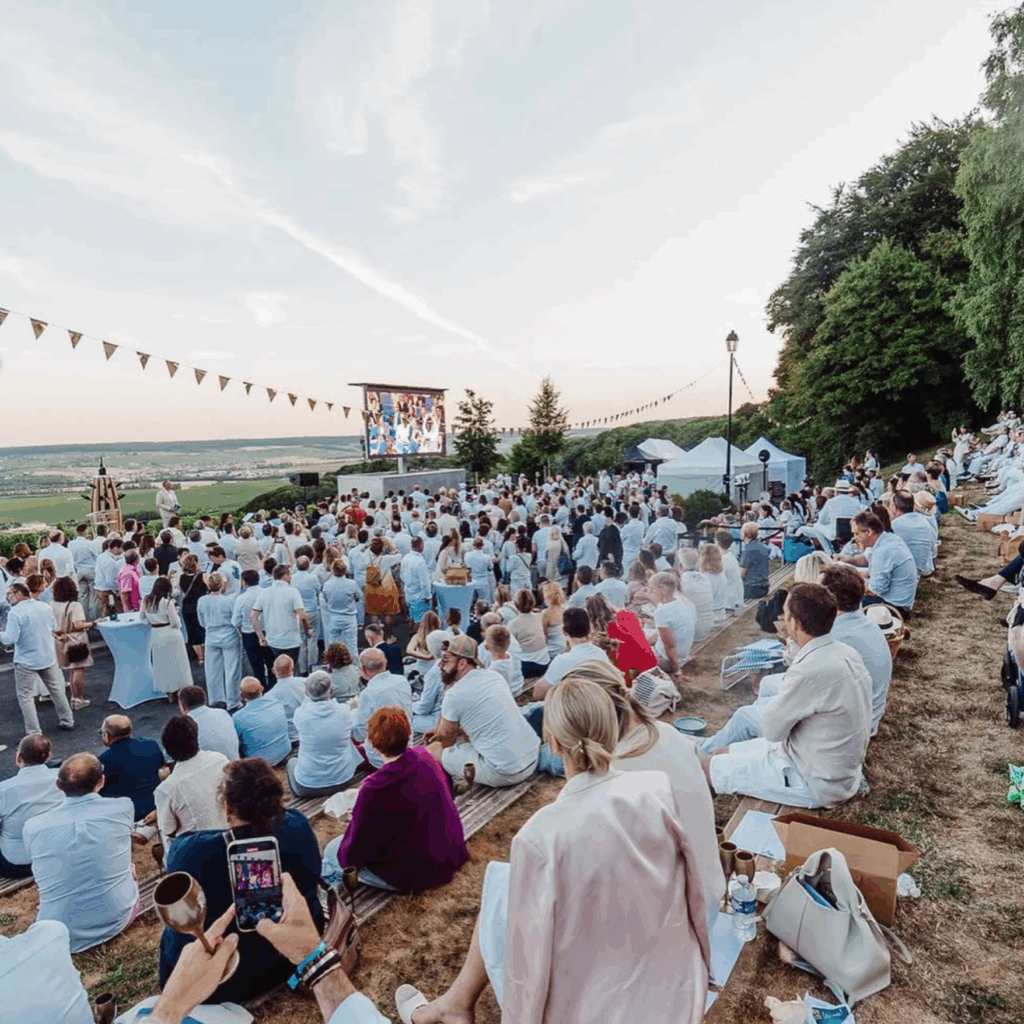It is July 2015. In Hautvillers, Reims and Epernay, glasses are raised, people dance in the streets, and Champagne flows freely. But it isn’t the launch of a new vintage or iconic cuvée that sparks celebration. It’s the moment the Coteaux, Maisons et Caves de Champagne officially become a UNESCO World Heritage Site. The vineyards, houses and cellars of the region are recognised as a cultural icon of global importance.
This month, the 10-year anniversary is celebrated throughout the region, with the highlight being La Nuit des 10 ans in historic Champillon. A festive evening of picnics, live music, cake and a spectacular fireworks and drone show lights up the skies. But what has this title truly brought to the Champagne region? And why is now the perfect time to visit with Champagne Travel?
A crown on centuries of champagne heritage
The UNESCO recognition didn’t come overnight. Since 2006, intensive lobbying had been taking place behind the scenes. One of the key driving forces was Pierre Cheval, owner of Champagne Gatinois and longtime chair of the Mission Coteaux, Maisons et Caves de Champagne. He dedicated his life to the protection and promotion of the Champagne region as a whole. His vision and perseverance were crucial in the lengthy preparation of the UNESCO application.
“Thanks to all the pioneers who built a unique heritage with agricultural landscapes, cellars and houses. These people enabled Champagne wine – a symbol of reconciliation and celebration – to go global. They have handed down an outstanding heritage which has been recognised today.” – Jean-Marie Barillère (former president of the Union des Maisons de Champagne)
In 2014, France officially submitted its application, and on 4 July 2015, the long-awaited confirmation came: the hillsides, houses and cellars of Champagne were added to the list of the world’s most valuable heritage sites.
The recognition applies not only to the vineyards around Aÿ, Mareuil-sur-Aÿ and Hautvillers, but also to iconic locations such as the Avenue de Champagne in Epernay, the Saint-Nicaise hill in Reims and Fort Chabrol. Modern champagne as we know it was born in Hautvillers, making it especially meaningful that this village is part of the World Heritage listing.
Tragically, Pierre Cheval passed away on 14 January 2016, before he could be officially knighted as Chevalier in the Ordre de la Légion d’honneur.
“Vive le champagne et vive la Champagne!”
The response to the decision was nothing short of euphoric. On 5 July 2015, the UNESCO Victory was celebrated across the region with flags, speeches and – of course – plenty of champagne. As Pascal Férat, former president of the Syndicat Général des Vignerons, said: “You can’t imagine the sense of pride and joy. This is a collective reward for all the growers. This listing distinguishes our designation and etches into the stone tablets of UNESCO our vine-growing history within the great Champagne family.”
Michel Guillard, president of the Comité Champagne, added: “This truly is a victory for the whole Champagne region; it brings recognition for the exceptional and unique cultural heritage we have.”
What has UNESCO really brought to Champagne?
This March, the second edition of the Champagne Wine Tourism Conference took place in Troyes. Regional authorities and tourism professionals gathered to assess the impact of UNESCO recognition. The event, organised by the Mission Coteaux, Maisons et Caves de Champagne, in collaboration with the regional tourism board and Comité Champagne, showed that the impact has exceeded expectations.
During the conference, the results of a large-scale study by the Regional Planning and Development Agency of Reims (AUDRR) were shared. Between 20 January and 28 February 2025, nearly 600 stakeholders were surveyed. These included 250 wine and tourism professionals, 245 local residents and 77 elected officials from 54 municipalities. The study revealed three key benefits: increased awareness, economic growth and improved heritage management.
Some key figures:
- 90% of respondents noticed increased tourism appeal
- Annual visitors to Reims rose from 1.1 million (2016) to 1.8 million (2023)
- Visitor numbers in Hautvillers doubled from 72,500 to 162,000
- Tourist tax revenue in the Grande Vallée de la Marne rose from €50,000 to €350,000
- 70% of officials confirmed a noticeable rise in tourism since the designation
- Employment in the sector grew by 33%, reaching 8,240 direct jobs (2023)
In addition, 86% of residents say they are proud of the UNESCO status, and 82% believe the region’s image has significantly improved in the past ten years. The areas where the most progress has been made include:
- Tourism appeal (90%)
- Regional reputation (89%)
- Promotion of the area (87%)
- Heritage protection (84%)
- Organisation of cultural events (83%)
Sustainable heritage management
There have also been visible improvements in heritage preservation. 84% of residents say protection has improved. Since the designation, 26% of businesses and 19% of municipalities have actively invested in restoration projects. A large number of these initiatives applied sustainable methods: 21% of businesses and 15% of local governments opted for environmentally conscious restoration techniques.
One example is the introduction of the Sites Patrimoniaux Remarquables (SPR) – a French heritage status that offers extra protection to historic villages, districts and landscapes. These zones have now been established in Reims, Epernay, Hautvillers, Château-Thierry and Essômes-sur-Marne, with the aim of safeguarding their unique character.
New audiences, new expectations
One of the most noticeable changes is the internationalisation of visitors. While Champagne was once primarily a French affair, the region has in the past ten years become a popular destination for international wine lovers. According to the study, 44% of wine and tourism professionals have observed a clear shift in the origin of their visitors. This trend is especially noticeable in Reims, where the share of international guests has increased by 3% since 2016.
Visitors from Germany, the Netherlands and the United Kingdom are now leading the way. Notably, Dutch tourists now outnumber Belgians in terms of overnight stays – a trend we at Champagne Travel have clearly witnessed as well.
But it’s not only the audience that has changed; expectations have shifted too. Tourists no longer come just for a glass of champagne on a sunny terrace. They seek depth, stories and authentic experiences. According to 35% of professionals surveyed, demand has shifted significantly in the past decade. Today’s visitors want to learn about the winemaking process or take a guided tour through the vineyards and cellars. There’s growing interest in small-scale, personal experiences of high quality, with real connections to the winemaker. Authenticity, storytelling and knowledge sharing are more valued than ever.
Now is the time to visit
In short, UNESCO recognition has not only brought global status to Champagne, but also strengthened its identity as a region where tradition and experience come together. That’s why now is the perfect time to plan your visit. Explore the region with one of our curated Champagne Travel experiences.

